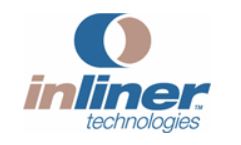 We are proud to spotlight NASTT’s 2017 No-Dig Show Silver Sponsor, Inliner.
We are proud to spotlight NASTT’s 2017 No-Dig Show Silver Sponsor, Inliner.
Inliner Technologies, LLC was established to manage, promote and continue to develop the CIPP technologies used by the Inliner® network of installers. Inliner® was first introduced to the United States in 1989 by the Kanal-Müeller Gruppe International, a German company who had been installing the product in Europe since 1985. In 1991, Reynolds Inc., a large Midwestern water and wastewater contractor decided to add the process of installing Cured-in-Place pipe (CIPP) to their roster of services as an Inliner® licensee soon to be joined by Kenny Construction Company, Lametti & Sons, and Western Slope Utilities,and finally, Clean Water Works, Inc. in the network of Inliner installers. In 1999, Reynolds Inc. would purchase the technology and rights to license the Inliner® process establishing Inliner Technologies,LLC as the technology and licensing company and Liner Products, LLC, the liner manufacturing company, both headquartered in Paoli, Indiana.
In 2005, Reynolds, Inc. was acquired by Layne, and as a result, Inliner Technologies and Liner Products, LLC are now part of the Layne corporate structure. With a successful track record since 1989, the sustained growth of the network has led to the current organization of certified installers consisting of over 40 crews, who together have installed over 25 million feet of Cured-in-place pipe. This organization shares in the development of improved processes, materials and most recently the introduction of a UV-Cured product known as Inliner STX.
Inliner Technologies is an industry leader in Cured-in-Place pipe renewal (CIPP), and offers trenchless pipeline rehabilitation solutions to municipal and industrial clients looking for safe, cost-effective, and long-term solutions for their aging infrastructure needs.
Inliner® Cured-in-Place pipe (CIPP) product has been used throughout the U.S. and Canada to protect, seal and renew over 25 million feet of sanitary, storm and industrial process piping.
